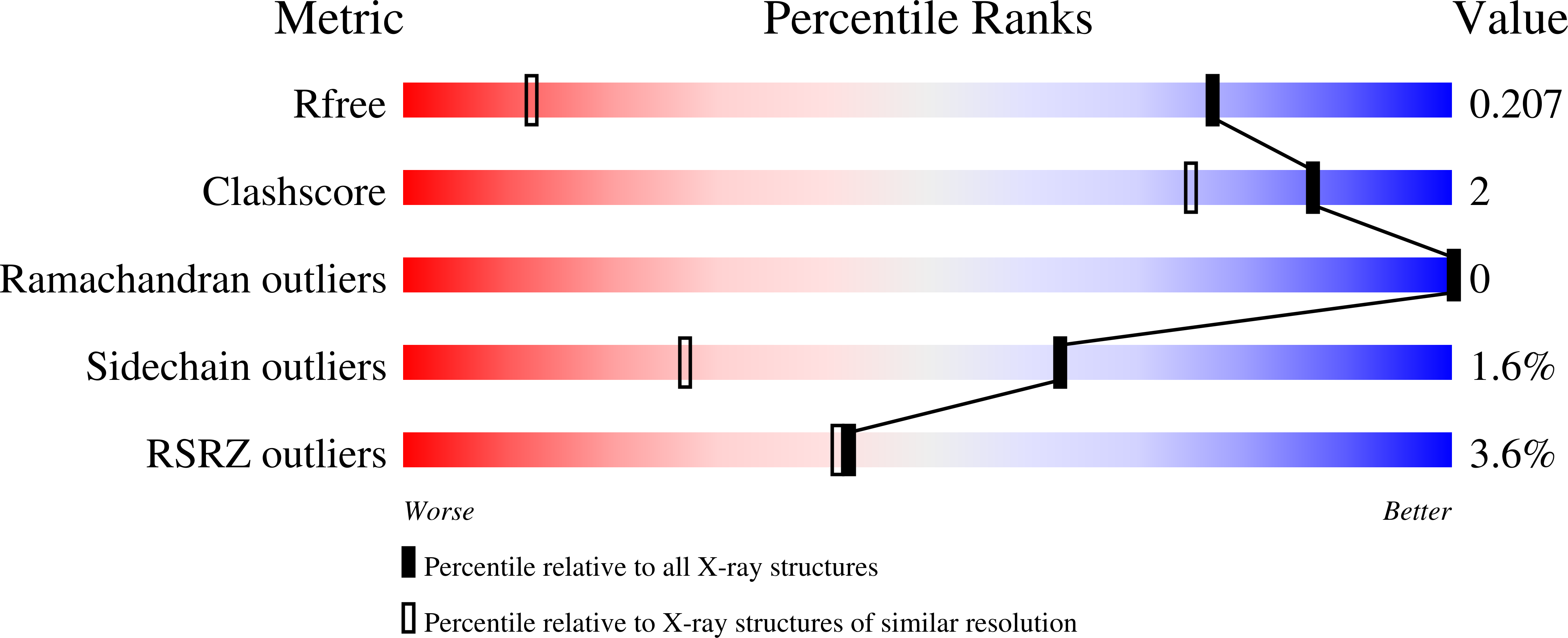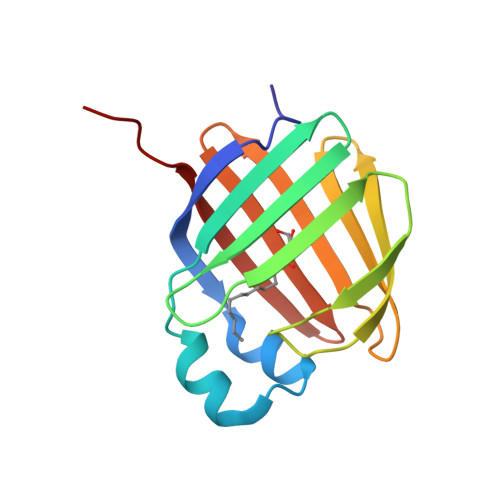Molecular basis for the interaction of cellular retinol binding protein 2 (CRBP2) with nonretinoid ligands.
Silvaroli, J.A., Plau, J., Adams, C.H., Banerjee, S., Widjaja-Adhi, M.A.K., Blaner, W.S., Golczak, M.(2021) J Lipid Res 62: 100054-100054
- PubMed: 33631211
- DOI: https://doi.org/10.1016/j.jlr.2021.100054
- Primary Citation of Related Structures:
7JVG, 7JVY, 7JWD, 7JWR, 7JX2, 7JZ5, 7K3I - PubMed Abstract:
Present in the small intestine, cellular retinol binding protein 2 (CRBP2) plays an important role in the uptake, transport, and metabolism of dietary retinoids. However, the recent discovery of the interactions of CRBP2 with 2-arachidonoylglycerol and other monoacylglycerols (MAGs) suggests the broader involvement of this protein in lipid metabolism and signaling. To better understand the physiological role of CRBP2, we determined its protein-lipid interactome using a fluorescence-based retinol replacement assay adapted for a high-throughput screening format. By examining chemical libraries of bioactive lipids, we provided evidence for the selective interaction of CRBP2 with a subset of nonretinoid ligands with the highest affinity for sn-1 and sn-2 MAGs that contain polyunsaturated C18-C20 acyl chains. We also elucidated the structure-affinity relationship for nonretinoid ligands of this protein. We further dissect the molecular basis for this ligand's specificity by analyzing high-resolution crystal structures of CRBP2 in complex with selected derivatives of MAGs. Finally, we identify T51 and V62 as key amino acids that enable the broadening of ligand selectivity to MAGs in CRBP2 as compared with retinoid-specific CRBP1. Thus, our study provides the molecular framework for understanding the lipid selectivity and diverse functions of CRBPs in controlling lipid homeostasis.
Organizational Affiliation:
Department of Pharmacology, School of Medicine, Case Western Reserve University, Cleveland, OH, USA.

















